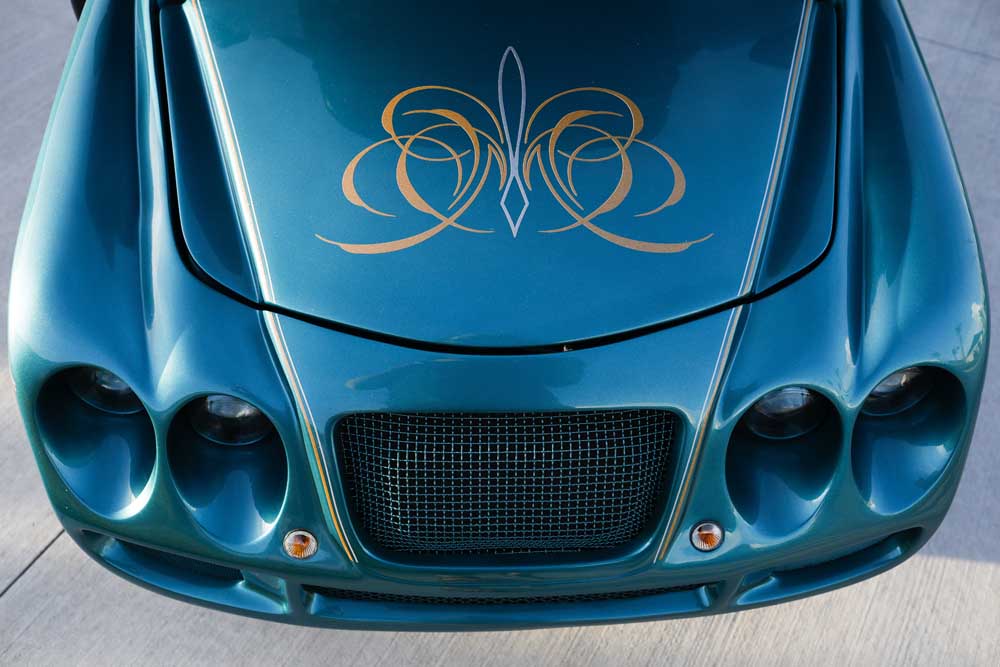Tricked-out golf carts of the Villages, Florida
Published 12:00 am Saturday, July 6, 2019

- The "Monarch front” adds storage space to Donna Joy’s golf cart in the Villages, a retirement community in Sumter County, Fla., June 30, 2019. Joy, 60, chose metallic green paint with silver and gold pinstripes for her vehicle and added reclining cushioned seats with armrests: “It’s kind of blingy,” she said. “You want to have something that you love.” (Eve Edelheit/The New York Times)
Plenty of the golf carts that roam the roads of the Villages in Florida look as if they had just come from the 18th hole, and maybe some did.
But many of the owners there — a retirement community with 120,000 residents and about 60,000 golf carts — want a little more zing, and a cottage industry has developed to sell tricked-out rides.
Tom Sarauer, 63, moved to the Villages from Wisconsin in 2017. In the garage are his-and-hers golf carts (or golf cars, as they are also known) that pay tribute to the Green Bay Packers. His is two-toned in Packers green and gold; his wife’s is jazzed up with stickers and LED lights.
Wisconsinites who have fled for warmer climes always make sure to stop and say hello when they spot the carts.
“It’s a conversation piece and a great way to meet people,” Sarauer said.
The Villages was laid out so the residents, people in their 50s and older, could meet all their shopping, medical and entertainment needs without a full-size vehicle.
“If you can’t have a real Corvette, you can at least drive something designed to look like one,” said Lori Resmondo, who has worked for the Villages Golf Cars (which has five locations) for 26 years.
Some reflect the owner’s alma mater, favorite sports team, former profession or main hobby. There are golf cars made to look like Model Ts and race cars. There is even a mini fire engine and a scaled-down 18-wheeler.
One popular option is to stencil the owners’ first names in decorative script across the front. Also popular are bonus safety features and extra-comfy seats.
Donna Joy, 60, chose metallic green paint with silver and gold pinstripes for her vehicle, adding reclining cushioned seats with armrests. It also has a “Monarch front,” a premium add-on that gives the golf cart the more rounded front-end look of a car and provides storage space for groceries or other items.
Joy had fold-up seats installed in the back where golf clubs would be carried so she could transport more people and a special basket that clips in for her two small dogs.
“It’s kind of blingy,” she said. “You want to have something that you love.”
The terms golf carts and golf cars cover two types of vehicle. The more traditional golf carts are not allowed on general roads, but “low-speed vehicles” can share the road with automobiles and have additional safety requirements, like headlights, taillights and a parking brake.
Some companies, like Club Car, make both types, and either can be customized. The vehicles have traditionally run on gas, but consumer demand for electric models is increasing. Basic models start around $11,000 and can top $20,000 with all the bells, whistles and New York Yankees logos. Holidays especially will bring out the carts, with parades and residents lined up to watch.
“It’s a very patriotic community,” Resmondo said, so on holidays like the Fourth of July, residents will “deck out their golf carts in honor of the event.” Special events will draw out a drill team that drives in formations like a marching band.
Globally, the golf cart market was worth $2.6 billion in 2017, with 60% of sales coming from the United States, according to market research firm Technavio.
Polaris, which makes GEM low-speed vehicles, sells mostly to the business market but is “diving into the consumer segment and seeing what they are most interested in,” said Keith Simon, vice president of Polaris Commercial North America.
One of the biggest differences between fleet and individual sales is the level of conformity. A golf course will want identical carts, because “uniform presentation is part of the brand,” said Robert McElreath, a vice president at Club Car, which has been making golf carts since the 1960s.
Safety features are a key distinction. Low-speed vehicles are legal to drive on streets with speed limits up to 35 mph, but they must include items like seat belts. On the GEM, seat belts, low- and high-beam headlights and backup cameras come standard, Simon said.






